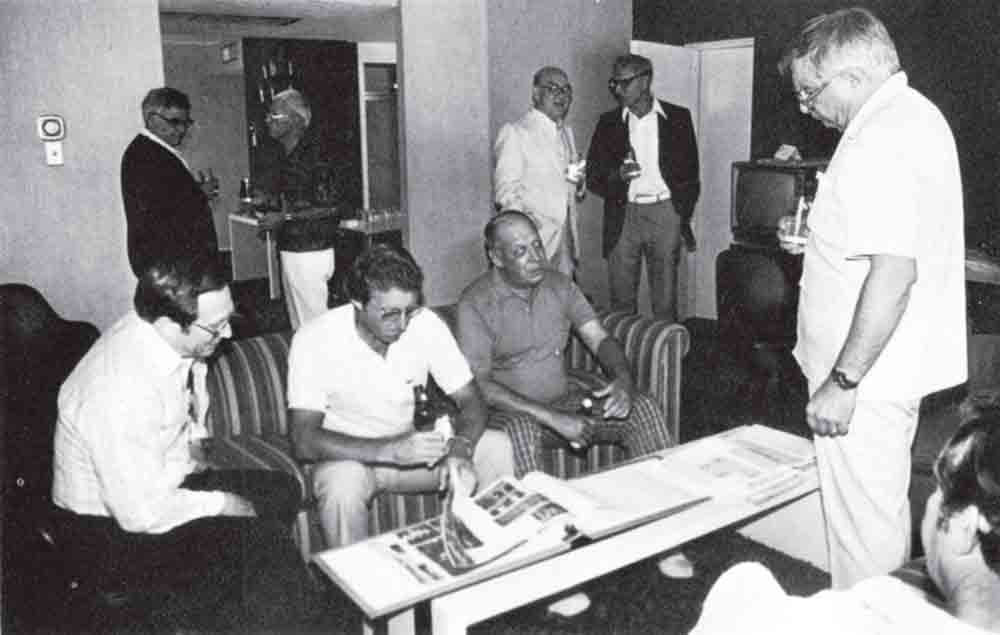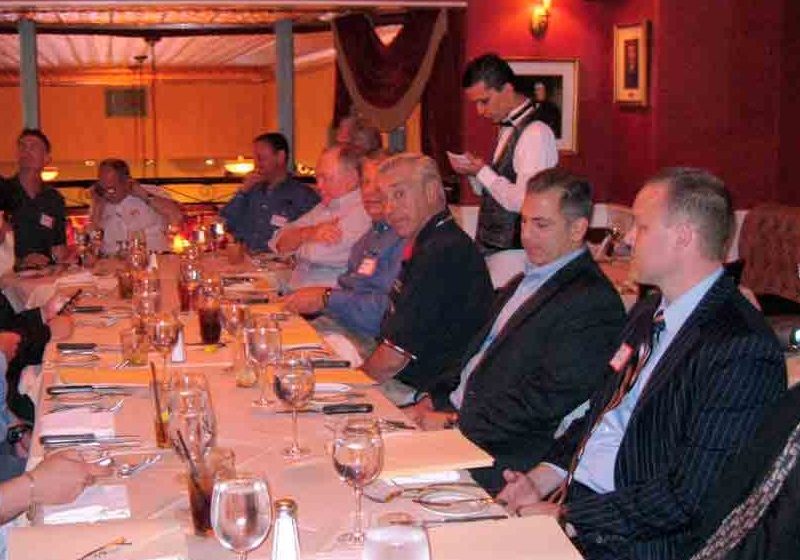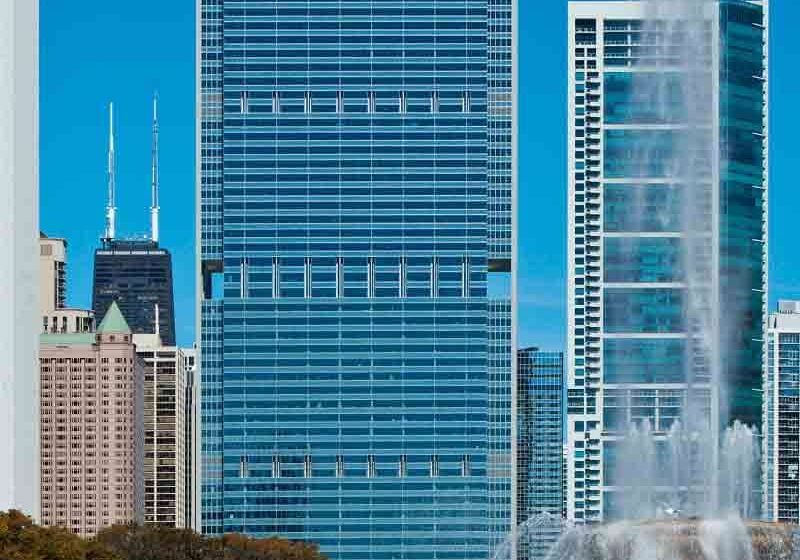A Look Back: ELEVATOR WORLD, January 1982
Jan 1, 2012

Examining the changing nature of global industry practice
The January 1982 issue of EW began in William C. Sturgeon’s well-known monthly column “Speaking of Issues,” with the acknowledgment that this issue marked the start of the magazine’s 30th year of publication. Sturgeon also reported that 1982 marked an important change in the operational structure of EW and, indeed, the theme of change describes much of the issue’s editorial content. However, a close second to this theme and its forward-looking posture was one of history – a topic that has always held an important place in EW’s editorial trajectory.
In his column and a feature article, Sturgeon and EW announced a reorganization of the magazine that included the creation of a board of directors. The new board was composed of longtime EW friends and industry leaders: Robert V. Jacobs (chairman of Gust. Lagerquist & Sons), Jack T. Edwards (vice president of Dover’s Elevator Division), Norman Bedford (president of Beckwith Elevator Co.), Fred W. Farnsworth (president of Eastern Elevator Co.) and James O. Olfson (president of General Elevator Co.). Sturgeon and current EW President Ricia S. Hendrick were also appointed to the new board. Jacobs was elected as the board’s chairman, and the following EW officers were also elected: Sturgeon (president), Jacobs (first vice president), Edwards (second vice president) and Hendrick (secretary/treasurer). Sturgeon characterized the new organizational structure as an important transition that effectively positioned EW as “an industry institution with the potential for long life.”
The theme of change was also evident throughout the “Comments” section, composed of letters to the editor. The majority of the letters offered praise for EW’s 1981 annual study, The World of the Code Makers. Edward A. Donoghue, manager of Codes and Safety for the National Elevator Industry, Inc. (NEII®) summarized the feeling of EW readers when he stated that the annual study effectively “cleared up the mystery of how ANSI/ASME A17 code documents” were written and interpreted, and how they influenced the vertical-transportation industry. In fact, the A17 code was referenced in several other columns due to the recent publication of a new revised edition. In his column “A Matter of Association,” Frank Aquilino (executive director of NEII) reported that the new edition featured a revised title: ANSI/ASME A17.1-1981 Safety Code for Elevators and Escalators. Aquilino reported, “The title was shortened merely for convenience, and the code still contains requirements for dumbwaiters, moving walks, material lifts with automatic devices and private-residence inclined lifts.”
Aquilino also reported on a related initiative – rewriting the Field Employees’ Safety Handbook – which was undertaken as a collaborative effort by EW and the NEII Safety Committee. According to Aquilino:
“It was the consensus of the committee to develop two safety handbooks – one for our construction personnel and one for service personnel. The safety handbook for construction will have new material on shafters and false cars. The service safety handbook will have new material on evacuation procedures and procedures to be followed during power failures. Both books will have new material on dumbwaiters, working with health hazards (i.e., asbestos, hearing protection, lead exposure, PCBs, etc.) and will contain a considerable number of illustrations.”
A parallel effort was reported by David A. Wizda in his column “Codes and Standards.” In response to requests from “manufacturers, inspectors and insurance companies,” the ASME Council on Codes and Standards had decided to establish an ad-hoc committee charged with writing “an American National Standard covering the qualifications of elevator inspectors.” The proposed new standard was defined as follows:
“This standard covers requirements for the qualification duties of the following personnel engaged in the testing and inspection of equipment within the scope of the ANSI/ASME A17.1 Safety Code for Elevators and Escalators:
- Inspector Trainees
- Inspectors; and
- Inspector Supervisors.
This standard applies to persons typically employed by
(but not limited to) the following:
- Jurisdiction authorities.
- Independent inspection agencies.
- Insurers of the equipment.
- Manufacturers, installers and maintainers of the equipment.
This standard does not cover personnel engaged in engineering and type testing as covered in Part XI of the ANSI/ASME A17.1 code, including inspections by laboratories in association with these tests.”
This initiative led to the creation of ASME QEI-1, Standard for the Qualification of Elevator Inspectors, which was first published in 1984.
The changing nature of global industry practice and competition was reflected in five articles and columns. One of the issue’s feature articles was part one of a two-part article titled “The Japanese Elevator Industry in Retrospect” by George W. Gibson and Elmer H. Sumka. The article chronicled the visit of a team of industry leaders to Japan in 1980. The visit was in response to the 1976 U.S. visit of a team composed of representatives from the Japan Elevator Association and the Japan Elevator Safety Association. This team toured U.S. manufacturers and met with code officials for the purpose of information and cultural exchange. In 1979, the Technology Transfer Institute (TTI), which had been established to organize “the transfer of technology between U.S. and Japanese industries,” facilitated a study trip to Japan for U.S. industry members. The visiting team included Gibson (Otis), Sumka (Westinghouse Elevator Co.), Richard E. Atkey (Dover Elevator Corp.), William C. Crager (chairman emeritus of ANSI/A17.1), Don Eudy (elevator inspector for the State of North Carolina), Jack E. Fraser (National Association of Elevator Contractors [NAEC]), C.I. Igawa (TTI project manager and interpreter), Charles W. Lerch (Lerch, Bates & Associates), H. Nykanen (KONE), and Joseph E. Russon (Kimball Elevator Co.). The article provided a thorough account of the team’s visit, which included trips to manufacturing plants operated by Toshiba Electric Co., Ltd.; Hitachi Ltd.; and Mitsubishi Electric.
NAEC history project planning meeting
Other international news included a report in “’Round the Elevator World” of the announcement that KONE had completed its purchase of Armor Elevator Co., Inc. of Louisville, Kentucky. John Miller, in his column “Court Cases of Consequence: That Critical Clearance,” discussed escalator operating tolerances/clearances and accident prevention. His article had been inspired by a recent inspection of a new Schindler/Haughton escalator installation in the J.C. Penney Store in Stanford, Connecticut. The column “Lighting up the Shaftway” by Nobuo Anzaiana and Eiki Watanabe of Mitsubishi Electric, addressed “The Challenge of Super High-Speed Lifts.” The article discussed the challenges associated with the operation of elevators running at 600 mpm (1,969 fpm).
Finally, EW announced the publication of the second edition of Terminology of Lifts, Freight Elevators and Escalators. The first edition had been published in 1962 by the FEM (the European Federation of Lifting, Conveying and Handling Equipment Manufacturers). The original edition was a unique dictionary of industry-specific terms given in German, English, Spanish, French, Italian and Swedish. The second edition was twice the size of the first, provided definitions for 3,500 terms and was expanded from six to eight languages: German, English, Spanish, French, Italian, Danish, Dutch and Portuguese. Founded in 1953, FEM represented the vertical-transportation industries of 16 countries: Austria, Belgium, Finland, France, Federal Republic of Germany, U.K., Ireland, Italy, Luxembourg, Netherlands, Norway, Portugal, Spain, Sweden and Switzerland.
The topic of industry history was present in a feature article on the renovation of the Biltmore Plaza Hotel in Providence, Rhode Island (also illustrated on the cover). Built in 1922, the 18-story hotel had fallen on hard times in the early 1970s and had been closed in 1976. The building was identified as a key component of the urban revitalization of Providence and was the subject of a substantial renovation effort, reopening in 1979. A critical aspect of the renovation was a redesigned lobby that featured a glass elevator that rose through the lobby ceiling and traveled through a 250-ft.-tall glass shaft, which was located in the exterior angle formed by the wings of the hotel. This placement guaranteed that city residents and hotel guests had a dynamic view of the elevator as it traveled from the lobby to the penthouse restaurant, appropriately named L’Apogee. The elevator was the result of a collaborative effort between Armor Elevator; Tyler Elevator Products; architectural firm Shepley, Bulfinch, Richardson & Abbott; elevator consultant Cal Kort; and general contractor Dimeo Construction Co. The architectural firm provided the conceptual vision for the glass cab, which was designed and built by Tyler Elevator Products. The elevator had a 3500-lb. capacity, traveled at 350 fpm and employed Armor’s trademark Dyna-Glide control system.
The presence of the past was also found in the monthly column “Monitor,” which featured a wide variety of industry news items. The column included a photograph of a group discussing the NAEC history project. The project was a collaborative effort between NAEC and EW and included the involvement of Sturgeon, Hendrick, NAEC historian John Martin and an editorial committee composed of Patrick Welsh, Jack Manning, Robert Jacobs, Jack Edwards and Jim Olfson. The project was completed later in the year and published in time for the 1982 NAEC annual convention. The 250-page book remains a unique and detail-packed treasure trove of information on industry activities from 1950 to 1981. The fact that 30 years have passed since its publication raises the prospective of the need for a second volume. This fact also serves as a reminder that no similar detailed histories exist for other key industry groups and associations.
On an autobiographical note: in January 1982, I began coursework in a graduate seminar on the history of architectural technology at the University of Virginia. When the time came to select a topic for the seminar’s required research paper, I chose elevator history. This paper marked my first foray into the field, and the rest, as they say, is history.
Get more of Elevator World. Sign up for our free e-newsletter.








